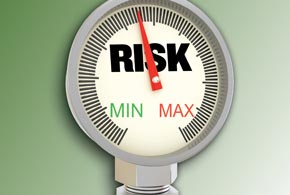
Why Organizations Are Acquiring Risk-Sensing Tech
 Why Organizations Are Acquiring Risk-Sensing Tech
Why Organizations Are Acquiring Risk-Sensing Tech
Preparing for the worst comes with the territory for CIOs and IT leaders, and risk-sensing technology has the potential to anticipate market shifts.
 Wide Usage
Wide Usage
80% of C-level execs say their organization uses risk-sensing tools.
 Keeping Pace
Keeping Pace
49% believe that data leveraging has emerged as the key way to mitigate the risk of being left behind.
 Top Business Areas for Risk-Sensing Tools
Top Business Areas for Risk-Sensing Tools
Finance: 70%, Compliance: 66%, Operations: 65%, Strategies: 57%
 Cautionary Developments, Part I
Cautionary Developments, Part I
35% say regulatory requirements currently present the greatest risk concerns, while 32% cite reputational risks and 29% say it’s the pace of innovation.
 Cautionary Developments, Part II
Cautionary Developments, Part II
30% say the pace of innovation and regulatory requirements will emerge as the greatest risk concerns three years from now, while 25% cite talent-related risks and 24% say it is reputational risks.
 Well Staffed
Well Staffed
65% say they employ people with adequate knowledge to both monitor and analyze risk-sensing data and make it actionable for business.
 External Input
External Input
40% agree that outside parties—detached from internal management’s agendas and biases—can analyze risks with greater objectivity and expertise than insiders.
 Best Practices: Identify the Risks to be Monitored
Best Practices: Identify the Risks to be Monitored
Work with senior leaders and stakeholders to target potential industry disruptors, metrics to track and thresholds that will trigger communication, escalation and countermeasures.
 Best Practices: Define the Required Risk-Sensing Elements
Best Practices: Define the Required Risk-Sensing Elements
These would include relevant data extracts from structured and unstructured sources. Make sure you incorporate visualization tools that present these in a comprehensible form.
 Best Practices: Configure Your Platform
Best Practices: Configure Your Platform
It must enrich data/findings by connecting them to trends impacting your sector, related industries, the economy, technology and regulatory compliance, among others.